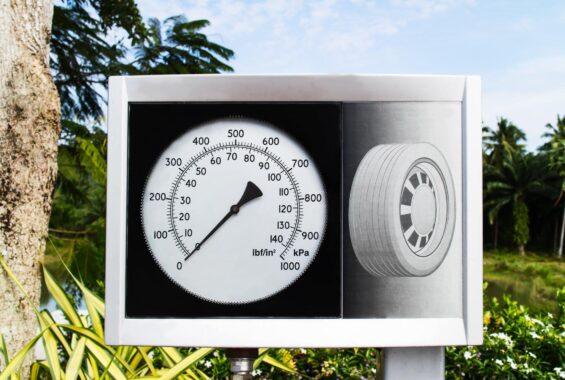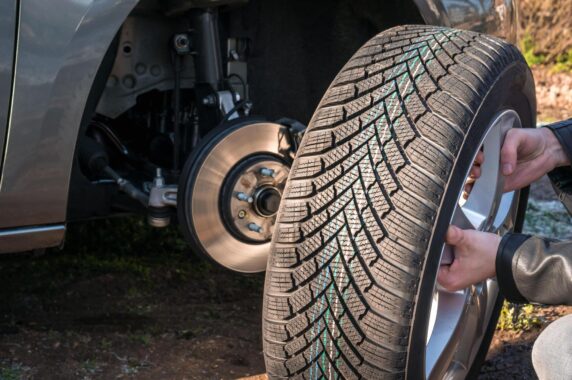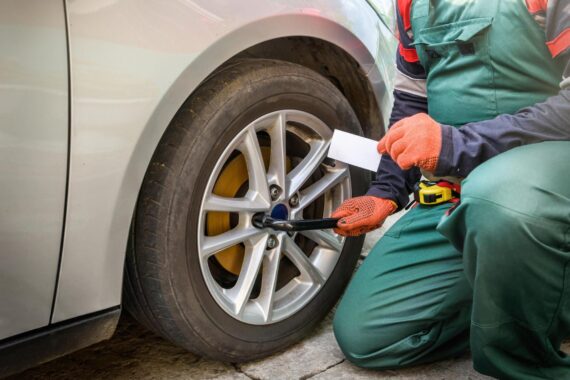Last Updated on 3 months
Introduction to Tire Pressure Monitoring System (TPMS)
Tire Pressure Monitoring Systems (TPMS) are vital in modern vehicle safety and are designed to keep drivers informed about their tire pressure. This introduction briefly summarizes how TPMS works, their importance in maintaining optimal driving conditions, and how they help vehicle safety and efficiency.
The Importance of Automobile Accessories
Accessories are essential in automotive ownership and maintenance. They are more than simply decorative elements that offer aesthetic appeal to the car; they also have helpful objectives that improve the driving experience. Accessories that will enhance the vehicle’s operational efficiency and safety are precious. They significantly increase the vehicle’s longevity, improve the driving experience, and, most importantly, ensure the driver’s and passengers’ safety.
Automobile accessories range from cosmetic upgrades like personalized seat covers and wheel caps to useful devices like GPS navigation systems, parking sensors, and tire pressure monitors. Each attachment provides an additional layer of convenience, safety, or both, making them an essential component of modern car culture. In a rapidly changing world where technology is critical in all aspects of life, keeping automobiles equipped with the most recent accessories is a source of pride and a must for safe and efficient driving.
Overview of Tire Pressure Monitoring Systems (TPMS)
A Tire Pressure Monitoring System (TPMS) is a modern electronic system that monitors the air pressure inside the pneumatic tires of various types of cars. The TPMS gives the driver real-time tire pressure information via a gauge, a pictogram display, or a primary low-pressure warning light. This system is essential to ensuring that a vehicle’s tires are not under or overinflated, which can result in various driving risks.

Definition and Functionality
TPMS is primarily designed to report real-time tire pressure information to the vehicle’s driver through a warning light, gauge, or digital readout. The system typically includes tire sensors that send pressure data to the vehicle’s computer system. There are two types of TPMS: indirect and direct. Direct TPMS gives real-time, accurate pressure readings from sensors inside each tire. Indirect TPMS uses the vehicle’s Antilock Braking System (ABS) to approximate tire pressure.
Safety and Efficiency
A TPMS’s principal function is to alert the driver of a potential tire failure or uneven tire pressure. Driving with incorrect tire pressure can reduce fuel efficiency, increase tire wear, and even cause tire failure, resulting in unsafe driving. By ensuring that tires are constantly inflated, TPMS helps extend tire life, improve fuel efficiency, and ensure vehicle safety.
Legislative Requirements
In many places, including the United States and the European Union, TPMS is not merely a convenience feature but a legal requirement for new vehicles. The safety benefits of TPMS are primarily driving this legislation. Properly inflated tires lessen the likelihood of tire blowouts, which can be deadly at high speeds. Furthermore, keeping proper tire pressure is a simple approach to help the environment by lowering the vehicle’s carbon footprint through improved fuel efficiency.
Technological Advancements
Modern TPMS systems are becoming more advanced and provide more than pressure monitoring. Some systems now include temperature monitoring, which can give early warning of tire overheating. Others interact with smartphone apps to provide detailed information on tire performance and health and maintenance reminders.
Understanding Tire Pressure Monitoring Systems
Tire Pressure Monitoring Systems (TPMS) have emerged as a crucial vehicle safety and maintenance technology. Any vehicle owner or operator must understand their function and how they differ from traditional tire pressure gauges.
What is TPMS?
A Tire Pressure Monitoring System (TPMS) is an advanced instrument built into a vehicle’s system that continuously monitors the air pressure in each tire. It informs the driver when the tire pressure drops below the manufacturer’s suggested level. The primary purpose of TPMS is to avoid underinflated tires, which can cause tire failure, decreased fuel efficiency, and poor vehicle handling.
How Does TPMS Work?
There are two main types of TPMS: direct and indirect.
- Direct TPMS: These systems use pressure sensors in each tire to determine the absolute pressure. The sensors provide this data to the vehicle’s onboard computer system, which informs the driver whenever a tire goes below the recommended pressure. These sensors are typically battery-powered and may require replacement after a given time.
- Indirect TPMS: These systems communicate with the vehicle’s Anti-lock Braking System (ABS). They use ABS wheel speed sensors to determine pressure levels. If a tire’s pressure is low, it rotates faster than correctly filled tires. This variation in rotation speed activates the TPMS warning.
Advantages of TPMS
Discover the multiple benefits of Tire Pressure Monitoring Systems (TPMS), including excellent safety and handling, increased fuel efficiency, and longer tire life. TPMS technology provides drivers with valuable real-time information to ensure optimal tire performance and road safety.
- It lowers the likelihood of tire blowouts and accidents caused by underinflated tires.
- Properly inflated tires result in the best fuel usage.
- Proper tire pressure reduces wear and increases tire life.
Difference Between TPMS and Analog Tire Pressure Gauges
An analog tire pressure gauge is a manual device for measuring tire pressure. It does not give continuous monitoring but a pressure report at a set measurement time. There are several types of analog gauges, including stick, dial, and digital versions, each with its own manner of presenting pressure measurements.
Key Differences
Understanding these distinctions can help drivers make more informed decisions about tire pressure monitoring for safety and performance.
- Continuous Monitoring vs. Manual Checking: The significant difference between a TPMS and an analog gauge is that a TPMS has continuous monitoring capacity, whereas an analog gauge only has manual, point-in-time checks.
- Accuracy and Precision: Direct TPMS is more accurate than analog gauges, which might experience calibration difficulties with time.
- Convenience and Accessibility: TPMS offers hassle-free monitoring by displaying alerts and readings on the vehicle’s dashboard. In contrast, using an analog gauge necessitates physically inspecting each tire.
- Integration with Vehicle Systems: TPMS is integrated into the vehicle’s electronic system, providing advanced functionalities like linking with smartphone apps for tire health analytics. Analog gauges are standalone tools without such capabilities.
- Cost and Maintenance: TPMS is generally more expensive, considering the price of sensors and maintenance. Analog gauges are low-cost and require minimal maintenance.
- Type of Information Provided: While TPMS primarily alerts about low pressure, analog gauges can provide exact pressure readings at a given moment.
Choosing the Right TPMS
Choosing the correct Tire Pressure Monitoring System (TPMS) is crucial when improving a vehicle’s safety and efficiency. A TPMS keeps the tires at the proper pressure and contributes to the vehicle’s overall performance and safety. Understanding the significant variables to consider when selecting a TPMS and its advantages is critical for any car owner.
Factors to Consider When Selecting a TPMS
Choosing your vehicle’s best Tire Pressure Monitoring System (TPMS) requires several essential factors. This guide emphasizes the most important criteria, such as compatibility, features, and pricing, which help you make an informed decision that ensures your vehicle’s safety, dependability, and value.
Durability
Consider the importance of durability when buying tires. Durability directly impacts their lifespan and overall performance. Choosing durable tires might result in fewer replacements and longer-term cost savings.
- Material and Build Quality: Look for TPMS models made from high-quality, long-lasting materials that survive harsh weather and road debris.
- Resistance to Elements: Ensure the system can perform successfully in extreme temperatures and circumstances, such as rain, snow, and high heat.
- Battery Life: When designing a system using battery-powered sensors, consider the battery’s lifespan. Long-lasting batteries require fewer replacements and maintenance.
Budget Considerations
Here is the significance of budget considerations when purchasing tires, balancing quality and affordability to ensure the best value for investment.
- Initial Cost vs. Long-Term Value: While more advanced TPMS devices may be more expensive up front, the long-term benefits, such as increased tire life and fuel efficiency, can more than compensate for the initial expenditure.
- Price Range: TPMS systems are available at various prices, from simple units to high-end models with additional functionality. Determine the budget and then compare features within that range.
Additional Features
This segment will discuss the advantages of considering additional features when choosing tires, such as all-season capabilities, particular tread patterns, or noise-reduction technologies, which can enhance the driving experience and safety on the road.
- Real-time alarms: Advanced TPMS generates real-time alarms requiring a prompt response, which is essential for avoiding tire-related incidents.
- Smart Integration: Some TPMS units work with phones or vehicle infotainment systems to improve monitoring and control.
- Customization: Look for systems that allow the configuration of alert thresholds based on the vehicle and tire specifications.
Benefits of Using a TPMS
A Tire Pressure Monitoring System (TPMS) has advantages beyond basic vehicle safety. This overview examines how a TPMS contributes to increased fuel efficiency, longer tire life, and better driving performance, emphasizing its importance in modern vehicle maintenance.
Accurate Tire Pressure Monitoring
Here is a detailed exploration of the significance of accurate tire pressure monitoring in ensuring optimal tire performance and vehicle handling. Properly inflated tires enhance safety, extend life, and improve fuel efficiency.
- Constant Monitoring: Unlike manual gauges, a TPMS continuously monitors tire pressure to ensure that they are always informed about the current state of the tires.
- Precision: TPMS offers more accurate readings than traditional tire pressure gauges, allowing optimal tire inflation.
Enhanced Safety
Learn how proper tire pressure maintenance improves road safety by lowering the chance of accidents and ensuring stable vehicle control, particularly during essential maneuvers and inclement weather.
- Prevent Tire Blowouts: Properly inflated tires reduce the risk of blowouts, which can be dangerous, especially at high speeds.
- Improved Handling: Correct tire pressure ensures better handling and stability, particularly in adverse weather conditions.
Fuel Economy
Understand the direct relationship between fuel efficiency and tire pressure. Proper tire pressure may significantly decrease fuel usage. This technique saves money at the pump and promotes a more environmentally friendly driving experience.
- Reduced Fuel Use: Properly inflated tires provide less rolling resistance and more efficient fuel use.
- Eco-Friendly: Optimal tire pressure lowers carbon emissions by reducing the engine’s required work to drive the vehicle.

Top 6 Tire Pressure Monitoring Systems on the Market
Tire Pressure Monitoring Systems (TPMS) keep tires safe and vehicles running efficiently. Several TPMS choices are available on the market, each with its functions and capabilities. This article discusses six of the best TPMS available, including their essential features, benefits, and applicability for various vehicle types.
CanDo HD Tire Pressure Monitoring System (TPMS)
The CanDo HD TPMS is an extensive and efficient system for heavy-duty vehicles like trucks and buses. It offers real-time monitoring for up to 22 tires, ensuring safety and efficiency for larger vehicles.
Key Features:
- Designed for Heavy-Duty Vehicles: CanDo HD TPMS is specifically designed for trucks and buses, with a capacity of 22 wheels, making it excellent for larger vehicles.
- Sensor Activation and Reading: This system is efficient and user-friendly and can read and activate OE (Original Equipment) sensors in seconds.
- LED Display: It shows the sensor ID, tire pressure, temperature, and battery status.
Benefits:
- Software Subscription: It has a three-year software subscription that ensures the system stays updated.
- Fit and Design: Compact enough to fit under the wheel arch, it is designed for ease of use and durability.
- Specialization for Larger Vehicles: Its capabilities make it a top choice for medium-to-large trucks and buses.
Pricing and Compatibility
- Price: Approximately $599.
- Compatibility: Best for medium-to-large trucks and buses.
Pros and Cons
- Pros: It includes a three-year software subscription and a compact and durable design specialized for larger vehicles.
- Cons: Higher price point, and it is limited to heavy-duty vehicles.
EEZ Tire TPMS Real-Time
EEZ Tire TPMS Real Time is an elaborate monitoring solution suitable for long and extra-long trucks. Its capability to monitor up to 26 tires stands out, offering real-time updates and high accuracy.
Key Features:
- Extensive Monitoring Capability: It monitors up to 26 tires and can handle pressure up to 210 psi.
- Real-Time Updates: It provides updates every six seconds, ensuring timely information.
- Advanced Programmability: It offers preset programmable modes for customization.
Benefits:
- Charging Flexibility: This may be charged via USB or cigarette lighter, which is convenient.
- High Accuracy: Promises 98.6% accuracy while monitoring tire pressure.
- Dual Sensor Types: It includes anti-theft and flow-through sensors to improve security and convenience.
Pricing and Compatibility
- Price: Ranges from $249 to $639.
- Compatibility: Ideal for large trucks; works with smaller vehicles as well.
Pros and Cons
- Pros: High accuracy, SB dual sensor types, and real-time updates.
- Cons: Some reported inaccuracies; potential leak detection issues.
Blueskysea Tire Pressure Monitoring System
The Blueskysea Tire Pressure Monitoring System is a solar-powered, cost-effective solution for tire monitoring. It’s particularly suitable for larger vehicles such as RVs and trucks, providing real-time data on tire conditions.
Key Features:
- Solar-Powered: It has an Eco-friendly design with a built-in lithium-ion battery for continuous power.
- Vehicle Compatibility: It is suitable for vehicles up to 32.8 feet long, including larger trucks or RVs.
- Real-Time Monitoring: It offers immediate updates on tire conditions.
Benefits:
- Temperature and Pressure Monitoring: It monitors in Celsius or Fahrenheit and PSI or BAR units.
- Stable and Accurate: It also provides stable and accurate sensor connections.
Pricing and Compatibility
- Price: Around $119.99.
- Compatibility: It is suitable for larger trucks and RVs.
Pros and Cons
- Pros: It is solar-powered and has accurate sensor connections and temperature and pressure monitoring.
- Cons: It is limited to six sensors and sometimes has issues with sensor reliability.
Tymate Tire Pressure Monitoring System
- Charging Flexibility: This may be charged via USB or cigarette lighter, which is convenient.
- High Accuracy: Promises 98.6% accuracy while monitoring tire pressure.
- Dual Sensor Types: Includes anti-theft and flow-through sensors to improve security and convenience.
Key Features:
- Dual Charging Options: It offers both solar and USB charging.
- Five Alarm Modes: It includes multiple alarm modes programmed by the manufacturer.
- Power-Saving Mode: It features an automatic sleep mode to conserve energy.
Benefits:
- Affordable Price: It offers reliable functionality at a lower cost.
- Vehicle Length Compatibility: It is suitable for vehicles up to 45 feet long.
- Ease of Use: It has a user-friendly interface and straightforward operation.
Pricing and Compatibility
- Price: Approximately $62.04.
- Compatibility: Works well with vehicles up to 45 feet.
Pros and Cons
- Pros: Affordable, reliable, user-friendly.
- Cons: Display can be challenging to read; manual could be improved.
GUTA Trailer Tire Pressure Monitoring System
GUTA Trailer TPMS is built for maximum performance and longevity. It has 12 sensors and real-time monitoring. It benefits vehicles with high tire pressure requirements, offering extensive coverage and robust alert systems.
Key Features:
- 12 Sensor System: It comes with 12 sensors and six alert modes.
- Real-Time Monitoring: It offers immediate feedback on tire pressure.
- High-Pressure Capacity: It is suitable for vehicles with tire pressure up to 188 psi.
Benefits:
- Advanced Alert System: It features a sophisticated alert system for fast leak detection.
- Long Battery Life: It ensures long operation without frequent battery changes.
- Exceptional Customer Service: It is known for its customer support and service.
Pricing and Compatibility
- Price: Around $409.99.
- Compatibility: Good for vehicles with high tire pressure.
Pros and Cons
- Pros: Advanced alert system; long battery life; excellent customer service.
- Cons: Some reports of inaccurate readings.
VESAFE Wireless Tire Pressure Monitoring System
VESAFE Wireless TPMS is a versatile and practical technology for large vehicles such as RVs and trailers. It has up to ten anti-theft sensors, a large-screen monitor, and real-time updates, ensuring security and convenience.
Key Features:
- Anti-Theft TPMS Sensors: It has up to 10 sensors with a signal booster for additional security.
- Large-Screen Monitor: It also comes with a large, easy-to-read display.
- Five Preset Alarm Modes: This system provides versatility in monitoring and alerts.
Benefits:
- Automatic Sleep Mode: The system is designed to conserve energy when not in use.
- High Accuracy: It delivers precise tire pressure readings.
- Broad Vehicle Compatibility: It is also suitable for RVs, trailers, motor homes, and other large vehicles.
Pricing and Compatibility
- Price: Approximately $299.99.
- Compatibility: Ideal for RVs, trailers, and large vehicles.
Pros and Cons
- Pros: It has accurate readings, is energy-efficient, and supports many vehicles.
- Cons: Some users have reported issues with reliability and functionality.

How TPMS Works
Tire Pressure Monitoring Systems (TPMS) are critical for ensuring the safety and efficiency of the vehicle. Understanding their work, installation process, and maintenance can help maximize their benefits. This article provides a comprehensive insight into the mechanism of TPMS, along with practical tips for Installation and maintenance.
Mechanism of Tire Pressure Monitoring
TPMS monitors the air pressure in a vehicle’s tires and alerts the driver when the pressure falls below or rises above the recommended level. There are two main types of TPMS: Direct TPMS and Indirect TPMS.
Direct TPMS
Learn about Direct Tire Pressure Monitoring Systems (TPMS), which provide real-time and precise tire pressure information by directly measuring each tire’s pressure. This technology offers accurate monitoring for enhanced safety and performance.
- Sensor-based Mechanism: Direct TPMS uses sensors inside each tire to measure the pressure directly. These sensors transmit pressure data to the vehicle’s computer system.
- Real-time Alerts: This system provides real-time, accurate tire pressure readings to the driver, usually displayed on the dashboard.
- Battery-powered Sensors: The sensors are typically powered by batteries, which have a lifespan of around 5-10 years.
Indirect TPMS
Investigate Indirect Tire Pressure Monitoring Systems (TPMS), which calculate tire pressure based on vehicle dynamics and wheel speed sensors. While indirect TPMS provides cost-effective monitoring, it may not be as accurate as direct TPMS, but it still adds to road safety.
- ABS System Integration: The indirect TPMS works with the vehicle’s Anti-lock Brake System (ABS). It measures tire pressure indirectly by analyzing each wheel’s rotational speed.
- Speed Variation Detection: If the tire’s pressure is low, it will rotate faster than correctly inflated tires, triggering an alert.
- No Physical Sensors in Tires: This system does not use physical pressure sensors in the tires, making it less expensive and less accurate than direct TPMS.
Installation and Maintenance Tips
Tire Pressure Monitoring Systems (TPMS) require proper Installation and frequent maintenance to perform effectively. This section includes essential instructions and tips for ensuring the TPMS works appropriately and improving vehicle safety and tire longevity. These guidelines will help keep the TPMS reliable and accurate from initial setup to routine checkups.
Installation Tips
Here, discover the essential installation tips for Tire Pressure Monitoring Systems (TPMS), ensuring that the sensors are correctly installed on the vehicle’s wheels to provide accurate and reliable tire pressure information.
- Professional Installation Recommended: For direct TPMS, a professional should install the system because it involves placing sensors inside the tires.
- Compatibility Check: Ensure the TPMS matches the vehicle model and tire type.
- Sensor Positioning: For direct TPMS, sensors must be correctly positioned to ensure accurate readings and avoid damage during driving.
Maintenance Tips
Learn how to maintain the TPMS to keep it running smoothly. Regular maintenance, such as checking sensor batteries and ensuring appropriate sensor installation, can extend the life of the TPMS while improving tire safety.
- Regular Battery Check: For direct TPMS, regularly check the battery life of the sensors. Most sensors have a battery life indicator.
- Sensor Cleaning: Keep the sensors clean, as dirt and debris can affect their accuracy. This is especially important for direct TPMS sensors.
- System Recalibration: After tire rotation or replacement, recalibrate the TPMS to ensure it provides accurate readings for each specific tire.
- Regular Inspections: Have the TPMS inspected during routine vehicle maintenance checkups to ensure it’s functioning correctly.
Buying Considerations for TPMS
When purchasing a Tire Pressure Monitoring System (TPMS), several factors must be considered to ensure a reliable, efficient, and suitable system. This article delves into the key considerations, such as the importance of accuracy, programmable modes, power sources, vehicle compatibility, and the balance between performance and price.
Importance of Accuracy in TPMS
Accuracy is paramount in a TPMS since it directly impacts the safety and efficiency of the vehicle. An accurate TPMS offers:
- Reliable Tire Pressure Information: This ensures that tire pressures are maintained within the recommended range, avoiding under- or over-inflation.
- Safety: Accurate readings help prevent tire-related accidents caused by incorrect tire pressure.
- Longevity of Tires: Consistently correct pressure readings help extend the tires’ life by preventing uneven wear.
Understanding Programmable Modes
Programmable modes in a TPMS add a layer of customization and convenience. These modes can be crucial for:
- Multi-Vehicle Use: When using the TPMS across different vehicles, programmable modes allow easy customization for each vehicle’s specific requirements.
- Different Driving Conditions: Set different pressure thresholds for various driving conditions like off-roading, highway driving, or varied weather conditions.
- Ease of Use: Monitoring and adjusting settings according to preferences and needs is more effortless.
Assessing Power Sources and Vehicle Compatibility
The power source of a TPMS is an important consideration, especially in terms of maintenance and ease of use. Compatibility with the vehicle simultaneously ensures the system works seamlessly.
- Power Source Options: Some TPMS are battery-powered, while others might use solar energy or can be charged via the vehicle’s electrical system. Consider the convenience and longevity of the power source.
- Vehicle Compatibility: Ensure the TPMS is compatible with the vehicle’s make and model. This is especially important for direct TPMS systems that require sensor installation.
Evaluating Performance and Price
Finally, evaluating the performance and price of a TPMS will help determine the best value for investment.
- Performance Expectations: Look for a system that offers real-time monitoring, alert systems, temperature readings, and other advanced features that meet the requirements.
- Price Range: TPMS systems vary in price. Basic models can be affordable, but more sophisticated systems with additional features may cost more.
- Value for Money: Consider if the higher-priced models offer genuinely valuable features for different situations or if a basic model would suffice.
Conclusion & Recommendations
After exploring the various aspects of Tire Pressure Monitoring Systems (TPMS), it is clear that these systems are vital for ensuring driving safety, optimizing fuel efficiency, and extending tire life. Factors such as accuracy, programmable modes, vehicle compatibility, and the balance between performance and cost should influence the choice of a TPMS.
Key Points:
TPMS systems come in two main types: direct and indirect, each with advantages. Though more expensive, natural systems offer real-time, accurate readings and are better suited for vehicles requiring precise tire pressure monitoring. Indirect systems are less accurate, more cost-effective, and easier to install. When choosing a TPMS, consider the durability, power source, additional features like real-time alerts, and the system’s compatibility with the vehicle. Always prioritize accuracy to ensure safety and efficiency.
Final Recommendations for Choosing a TPMS
When selecting a TPMS, choose a system that aligns with the car’s needs. Due to their extensive monitoring capabilities, systems like the CanDo HD TPMS or EEZ Tire TPMS Real-Time are excellent choices for larger vehicles or fleets. Systems like the Tymate or VESAFE might be more appropriate for personal vehicles. Always consider the long-term benefits, such as potential savings on fuel and tire replacements, which can offset the initial cost of more sophisticated systems.
Find the perfect match for a vehicle at Giga Tires.
It is crucial to have quality tires on your car and select the appropriate TPMS. Good tires and an efficient TPMS provide your car’s best safety and performance. At Giga Tires, we offer a wide selection of high-quality tires that cater to various vehicles and driving needs. Whether you are looking for durability, performance, or fuel efficiency, our extensive collection has something for every driver.
Explore our range at Giga Tires and find the perfect match for your vehicle. With our easy-to-navigate website and expert customer service, purchasing the right tires has always been challenging. Click here to discover our latest offerings and elevate your driving experience today.
FAQs
What are the three types of tire pressure monitoring system sensors?
There are three types of TPMS sensors: direct sensors, which are fitted within the tire; indirect sensors, which use the vehicle’s ABS to estimate pressure; and external sensors, which are commonly used in aftermarket systems and linked to the valve stem.
What are the two different types of TPMS?
The two main types of TPMS are Direct TPMS, which uses sensors inside each tire for accurate pressure readings, and Indirect TPMS, which calculates pressure based on wheel speed and other vehicle data.
Are aftermarket TPMS sensors any good?
Aftermarket TPMS sensors can be effective and are less expensive than OEM sensors. However, their compatibility and quality can vary, so selecting reputable brands and ensuring proper Installation is critical.
What brand of TPMS does Toyota use?
Toyota commonly uses TPMS sensors produced by Pacific Industrial Co. Ltd, which are noted for their dependability and easy integration with Toyota vehicle systems.
What should you look for when buying tire pressure monitoring systems (TPMS)?
When buying a Tire Pressure Monitoring System (TPMS), consider factors like accuracy, vehicle compatibility, sensor battery life, ease of Installation, and additional features such as temperature monitoring and smartphone connectivity.
What is the tire pressure monitoring system?
A Tire Pressure Monitoring System (TPMS) is an electronic system designed to monitor the air pressure inside the tires of various vehicles. It alerts the driver when the pressure is too low or high to ensure safety and efficiency.
Which sensor is used to measure tire pressure?
Tire Pressure Monitoring Systems (TPMS) use pressure sensors to measure tire pressure. In direct systems, these sensors are located inside the tire, while indirect systems use the vehicle’s wheel speed sensors for measurement.
What does a Tire Pressure Monitoring Systems (TPMS) sensor detect?
A Tire Pressure Monitoring Systems (TPMS) sensor detects the tire’s pressure level and, in direct systems, may also measure temperature. It informs the driver when the pressure is outside the recommended range, providing information via the vehicle’s dashboard.












